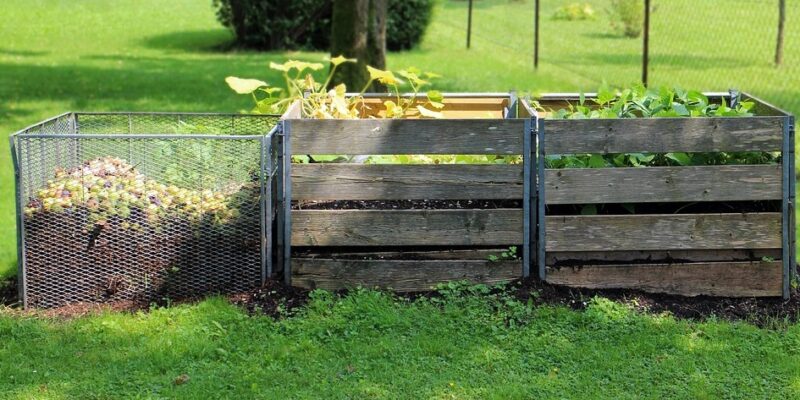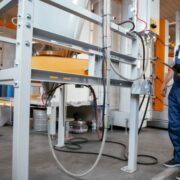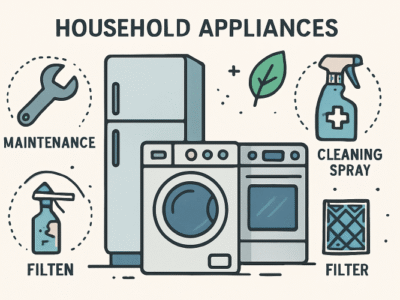Do you want to learn about what’s next for waste management practices across the United States?
The composting industry continues to grow at an extraordinary pace, but struggles against major obstacles that prevent it from achieving its full capacity. Organic waste accumulation in landfills has reached alarming level,s which makes expanding composting infrastructure essential now more than ever.
I will demonstrate why this issue requires attention while explaining actionable solutions.
Your Composting Roadmap:
- The Current State of US Composting Infrastructure
- Major Challenges Facing Expansion Efforts
- Emerging Opportunities for Growth
- Success Stories and Models for Replication
- How Communities Can Support Facility Development
The Current State of US Composting Infrastructure
The United States faces a composting challenge that simultaneously presents an opportunity for improvement.
Here’s the reality: The United States produces about 144 million tons of organic waste each year, which makes up approximately 61% of the material in municipal landfills. Composting presents a substantial opportunity to lower landfill waste levels.
The decomposition of organic materials in landfills produces methane gas, which proves to be a much stronger greenhouse gas than carbon dioxide. Composting facilities provide a valuable solution by transforming this waste into beneficial soil amendments.
These facilities are unevenly spread among areas. Seven states house about 50% of Food waste composting facilities in the U.S. are mostly in California, New York, Colorado, Pennsylvania, Washington, Texas, and North Carolina.
The uneven distribution of these facilities results in large regions of the country without proper service, which leads to both missing infrastructure elements and potential growth prospects.
Windrow composting remains the dominant technique at existing facilities since around 42% of them implement this method. A notable 20% of surveyed facilities employ various composting methods to enhance their operations across different types of waste streams.
But despite this established foundation, most communities across America still lack access to adequate compost facilities in the US, leaving millions of tons of organic materials with nowhere to go except landfills.
Major Challenges Facing Expansion Efforts
Why don’t we have more composting facilities? The challenges are large but manageable.
Regulatory obstacles represent a prominent challenge to overcome in the expansion of compost facilities. The approval process for constructing new facilities requires substantial time and effort, with years needed to complete. State-to-state regulations show significant differences, resulting in a collection of diverse requirements that complicate expansion efforts.
The question of financial support and business sustainability presents another major challenge. Operating a composting facility demands significant capital investment, yet achieving financial return takes multiple years. Many projects encounter financing difficulties when they lack consistent policy support.
Public perception combined with NIMBYism (“Not In My Back Yard”) creates yet another hurdle for projects. Residents frequently resist new facility proposals because they worry about smells, increased traffic, and potential drops in property values. These concerns can derail even well-designed projects.
Technical and operational challenges also exist. Modern composting facilities need to handle diverse waste streams while keeping decomposition conditions ideal to generate premium end products. This requires specialized knowledge and equipment.
Compost facilities must create markets for finished compost. Facilities find it difficult to sell their output and sustain revenue if they lack strong end markets.
Emerging Opportunities for Growth
Many composting innovations and growth opportunities exist.
Circular economy enthusiasm has increased composting demand as a waste management solution. Organic material recycling gains increasing appreciation from business sectors and municipal authorities as well as everyday consumers.
Government policies at every level demonstrate increasing movement toward supporting composting initiatives. Multiple states have established bans on organic waste that mandate major producers to redirect food waste away from landfills. The implementation of these policies immediately increases composting facility demand.
Technological innovations are revolutionizing the industry. The U.S. composting facilities showed growing material handling capacity in 2023, as 71% accepted compostable food-contact packaging while 29% rejected it.
Public-private partnerships present effective frameworks for building new facilities. Public funding, together with private sector expertise, enables communities to break through financial limitations while making sure facilities address local requirements.
Composting has become a key element in climate action plans and sustainability initiatives aimed at reducing greenhouse gas emissions. Achieving environmental objectives creates a foundation for obtaining both political backing and funding resources.
Success Stories and Models for Replication
Studying successful facilities nationwide offers key insights for expansion initiatives.
The composting program of San Francisco has achieved one of the most extensive implementations in the United States. The city achieves over 80% waste diversion from landfills through its collaboration with Recology. Their success stems from:
- Strong policy mandates
- Consistent public education
- Seamless collection systems
- Long-term contracts for investments
The implementation of Vermont’s Universal Recycling Law stimulated the growth of various types of recycling facilities throughout the state. Different pathways for processing organic waste emerge based on geographic location and waste volume.
State university extension programs have provided essential support, which has led to North Carolina’s composting industry successful development. The state’s technical support efforts have facilitated the establishment of various facility models.
These success stories share common elements: Organic waste facilities succeeded through clear policy directives, along with local stakeholder collaboration and site-specific operational methods.
How Communities Can Support Facility Development
The development of composting infrastructure depends heavily on community efforts to establish supportive conditions.
The development of new facilities becomes more efficient and cost-effective when permitting procedures are streamlined alongside environmental protections. Developing new facilities requires partnerships between environmental agencies and planning departments.
Financial incentives like grants and tax benefits, alongside low-interest loans, can help remove initial capital barriers for development. Successful facilities have managed to thrive by combining both public funds and private investments.
Successful facilities require public awareness and engagement to acquire needed input materials and generate their end markets. Community composting schemes invite infrastructure development investments.
The creation of robust end markets for finished compost via procurement strategies and agricultural collaborations provides facilities with dependable product distribution channels.
The development of sustainable operations requires creating an ecosystem through partnerships between waste generators, processors, and end users. Food waste producers require help to find suitable composting solutions.
The Path Forward: Action Steps for Expansion
What steps can we take today to speed up the creation of composting facilities throughout America?
The landscape would dramatically change through federal policy reform. Establishing national permitting and operational standards would eliminate regulatory uncertainty and dedicated financial support would address monetary challenges.
Organic waste bans at the state level have successfully generated fast demand for waste processing facilities. The requirement for large generators to redirect food waste away from landfills triggers new infrastructure investments in the market.
Innovation sharing programs enable leading operations to transfer their advancements to less established facilities. The transfer of best practices from advanced monitoring systems to odor control technologies helps new operations reduce their learning time.
Workforce development initiatives address a critical but often overlooked barrier: the need for skilled operators. Successful large-scale composting operations depend on expert knowledge from waste management, agriculture, and environmental science.
When planners integrate organic management with other infrastructure requirements, they can discover both synergies and efficiency gains. Placing composting facilities next to wastewater treatment plants cuts transportation expenditure.
The Bigger Picture: Transforming America’s Waste Future
Developing composting facilities provides environmental benefits which also create economic growth opportunities.
When we redirect organic waste to facilities other than landfills we cut methane emissions while generating employment opportunities and producing high-quality soil products. Organic material management faces real obstacles yet significant transformation momentum is developing.
The primary consideration for America’s composting infrastructure expansion is the rate at which development will occur. The composting movement stands ready to speed up its growth through strategic investments paired with policy support and community involvement.
Every community has organic waste. Every community needs soil health. The composting process forms a circular system that benefits all parties involved by connecting organic waste requirements with soil health needs through proper infrastructure development.
Do you want to join this transformation process?
If you want morе еxciting contеnt, visit. Globallyviz.com














Comments